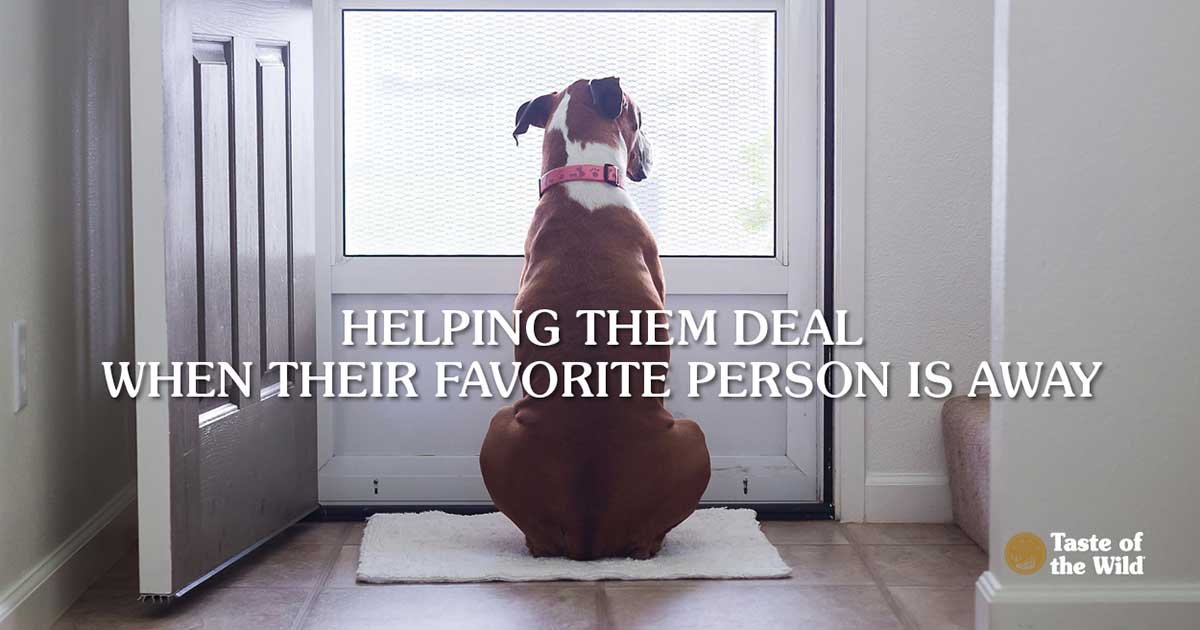
Do you dread leaving for work on Monday mornings? Your pet may hate it even more than you. For the 17 percent of dogs — and, less commonly, cats — who suffer from separation anxiety, time spent apart can be extremely distressful.
So much so, in fact, that some dogs may leap through glass windows, bloody their paws scratching at the door and even fracture teeth trying to chew through metal enclosures to reach the person they adore. To register their discomfort, other pets may whine, bark, pace, eliminate in the house, obsessively lick themselves or destroy furniture and other possessions.
This can be distressing for an owner, too. But for pets who act out of fear or anxiety, punishment will most likely compound their fear. Your best option is to work with your veterinarian or a veterinary behavior specialist to help your pet overcome his or her fear.
Take Steps to Modify Your Pet’s Behavior
Your veterinarian can help identify what’s behind your pet’s behavior. Because separation anxiety often brings on pacing, whining and other stressful behaviors in the first 5 to 30 minutes after the owner departs, it may help to set up a video camera near the door to capture your pet’s behavior. Pets usually require behavior modification and in severe cases, your veterinarian may recommend a medication.
There are a number of steps you can take to treat (or at least soothe) separation anxiety:
- Make departure cues less predictable. Because certain cues may tell your pet that you’re about to leave — such as picking up your keys and putting on your coat — do these same things several times a day, but sit back down on the couch.
- Leave for short periods of time. Once your pet is less fearful of departures, try going out the door and coming back in. Gradually extend the time you’re gone. When you are gone a long time, consider leaving the radio or TV on so your pet feels less alone.
- Associate departures with something good. Before you do leave, give your pet something pleasurable to distract them, such as a treat-filled toy or other pet-safe toy.
- Ignore your pet when you depart and arrive at home. Don’t reward your pet’s attention-seeking behaviors with high-pitched pledges of love. Simply ignore them for 10 to 15 minutes and only give them attention when it is calm.
- Reward independence. Show your pet it doesn’t need to be superglued to your side at all times. Provide them with a comfy bed and toys in another room. A pheromone diffuser in the room may also help your pet stay calm.
- Ignore frantic efforts to get your attention. Teach your pet that you’re the one who initiates attention and only at times when your pet is calm.
- Make sure to schedule exercise and play time each day. A tired pet is often a well-behaved pet. Make sure to give your pet opportunities to work off energy and interact with you as part of a daily routine.
- Consider doggy day care or a pet sitter. If you must be gone for long periods of time, your dog may benefit from playing with other dogs or a pet sitter may do the trick for your cat.
Calming your pet’s separation anxiety won’t happen overnight. It takes patience and help from a veterinary professional. But with time, many pets can learn to be alone without being distressed.
The information in this blog has been developed with our veterinarian and is designed to help educate pet parents. If you have questions or concerns about your pet's health or nutrition, please talk with your veterinarian.
